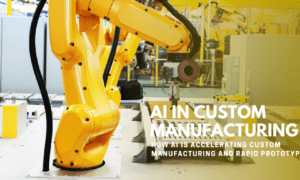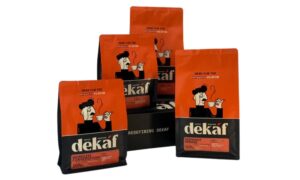Changes in technology continue to drive changes in the packaging industry, positive changes for quality, efficiency and innovation. Wrap around labelling has come a long way One of the places we’ve seen rapid advancements is that of wrap around labelling (where the company goes about the container 360°). The wrap around labelling system has been transformed by automation into a faster, more accurate and more versatile process. In this article we explore how automation is transforming wrap around labelling and learn how both manufacturers and brands can benefit.
What is Wrap Around Labelling?
Before we start to look at the influence of automation, it’s necessary to get to grips with what wrap around labelling is. Wrap around labelling Wrap around labelling is applied to the whole or a substantial portion of the circumference of the container. This type of printing provides a wide surface area to brand, inform and design your cylindrical and ovoid products. It’s typical to see wrap around labels from food and beverage to cosmetics and pharmaceutical products.
In the past, labelling was a time-consuming, arduous and subjective task, but this is all quickly changing with machine learning.
The Role of Automation in Wrap Around Labelling
Wrap around labelling is typically a process involving automated machinery that use sensor mounts, Robotics arms, and sophisticated software for accurate application of labels at high production speeds onto moving containers. These methods take in a lot of material very quickly and in very high precision—far more efficiently than any human-operated or faintly machine-aided method could hope to achieve.
Key Ways Automation Is Transforming Wrap Around Labelling
- Increased Speed and Efficiency
Wrap around labellers are “fully auto” machines and applying to as many as 60 or even 100 a minute. This cuts down the production time significantly, allowing plants to keep up with increasing consumer demand while maintaining quality.
Faster speeds also translate to a speedier lead time, so brands can react to trends in a season or new products more efficiently. And (6) for businesses producing a variety of product lines, in addition to the fast change-overs automation supports, the downtime between batches can be minimized.
- Enhanced Precision and Consistency
An other problems of the manual labelling is the size and the alignment of the labels. The attractive labelling is achieved through the use of high-tech sensors and vision systems to guarantee that each label is applied perfectly without a wrinkle, crease, or misalignment.
This level of accuracy provides a more aesthetically pleasing product, enhances brand professional image, and eliminates waste from misapplied labels. This is key for premium products, where the quality of the packaging drives consumer perception.
- Flexibility for Customization
Contemporary wrap around self adhesive labelling systems are particularly flexible. They can accommodate a variety of containers size, shape and label materials rapidly to change without any change parts. Such versatility allows the brands to personalize the labels with variable data like batch numbers, expiration dates or personalized messages in a production line without losing precious time.
Automation also allows for complex label design such as multi-layer and shrink sleeves that push the creative envelope of packaging.
- Reduced Labor Costs and Increased Safety
Labor is eliminated from the labeling process by automation, reducing labor costs and eliminating the potential for human errors. It also improves occupational safety reducing worker exposure to repetitive tasks and hazardous machineries.
With automatic wrap around labelling, businesses can free up additional man hours to more valuable tasks like quality control, planting new ideas or engaging their customer with a great customer service.
- Improved Quality Control
The majority of automatic labelling machines have integrated inspection utilities. These products inspect label presence, orientation, as well as print quality and enable immediate ejection of failed products.
This just in quality control measure also assures that products adhere to safety and quality guidelines by preventing recalls and ensuring brand reputation.
The Future of Wrap Around Labelling Automation
With the strides being made in technology, wrap around labelling automation is also looking toward features such as artificial intelligence (AI) which would enable predictive maintenance, machine learning to provide adaptive control, and internet of things (IoT) for real-time monitoring and data analysis.
These technologies deliver enhanced efficiency, reduced downtime, and greater intelligence across the supply chain.
Conclusion
Wrap around labelling is certainly being revolutionised by automation as speed, accuracy, versatility and standard of finish are all being significantly improved. For manufacturers and brands, turning to an automated labelling solution results in faster production, lowered costs and packaging that enhances brand image and captivates consumers.
With markets being increasingly competitive and consumer expectations growing, automatic wrap around labelling is positioned to be an essential asset for anyone transporting product that needs to catch the eye on the shelf and maintain impressively high levels of quality per pack per hour.



































